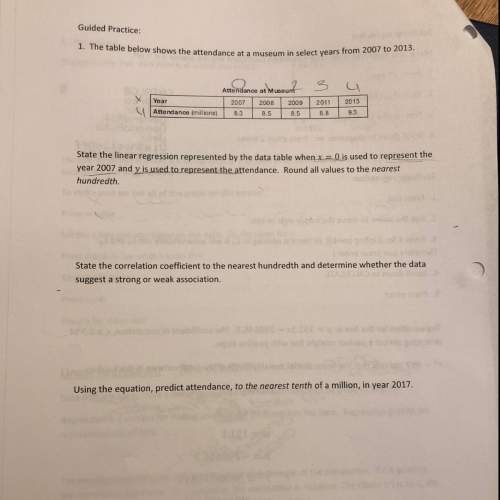
Mathematics, 07.03.2021 08:20 sanafarghal
The base of a solid S is the region bounded by the curve y=e^-x, the x-axis, the y-axis, and the line x=1. Cross sections perpendicular to the x-axis are equilateral triangles. Determine the exact volume of solid S.

Answers: 2


Other questions on the subject: Mathematics

Mathematics, 21.06.2019 12:40, lokiliddel
Given the graph below state whether or not the relation is a function, and give the domain and range.
Answers: 3

Mathematics, 21.06.2019 18:10, sajdshjad751
Abc will undergo two transformations to give aa'b'c' which pair of transformations will give a different image of aabc if the order of the transformations is reversed? a. a rotation 90' counterclockwise about the origin followed by a reflection across the y-axis b a translation 5 units down followed by a translation 4 units to the right c. a reflection across the x-axis followed by a reflection across the y-axis a rotation 180'clockwise about the ongin followed by a reflection across the y-axis reset next 2 omentum all rights reserved o atk me anything o o e
Answers: 1

Mathematics, 21.06.2019 21:30, emilyplays474
Which of the following is a solution of z^6 = 64i? 2(cos105° + isin105°) 2(cos120° + isin120°) 2(cos135° + isin135°) 8(cos15° + isin15°)
Answers: 1

Mathematics, 21.06.2019 21:30, aidanfbussiness
Anumber cube is rolled two times in a row. find the probability it will land on 2 on the first roll and a number greater then 4 on the second roll
Answers: 1
You know the right answer?
The base of a solid S is the region bounded by the curve y=e^-x, the x-axis, the y-axis, and the lin...
Questions in other subjects:













